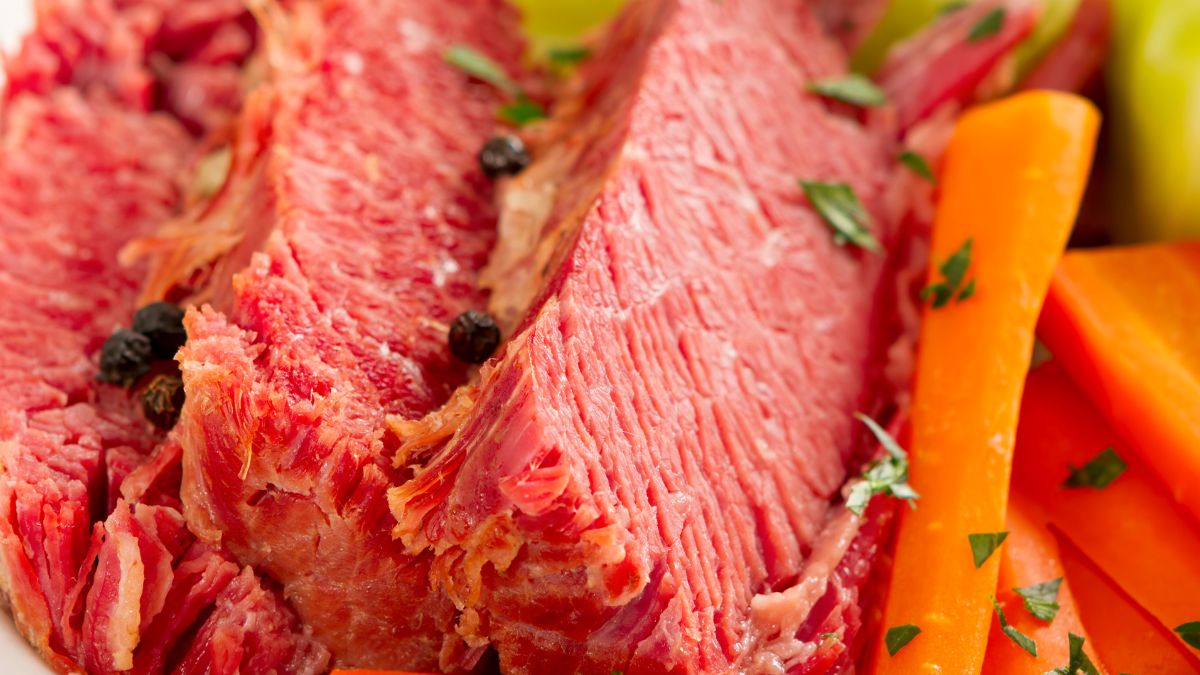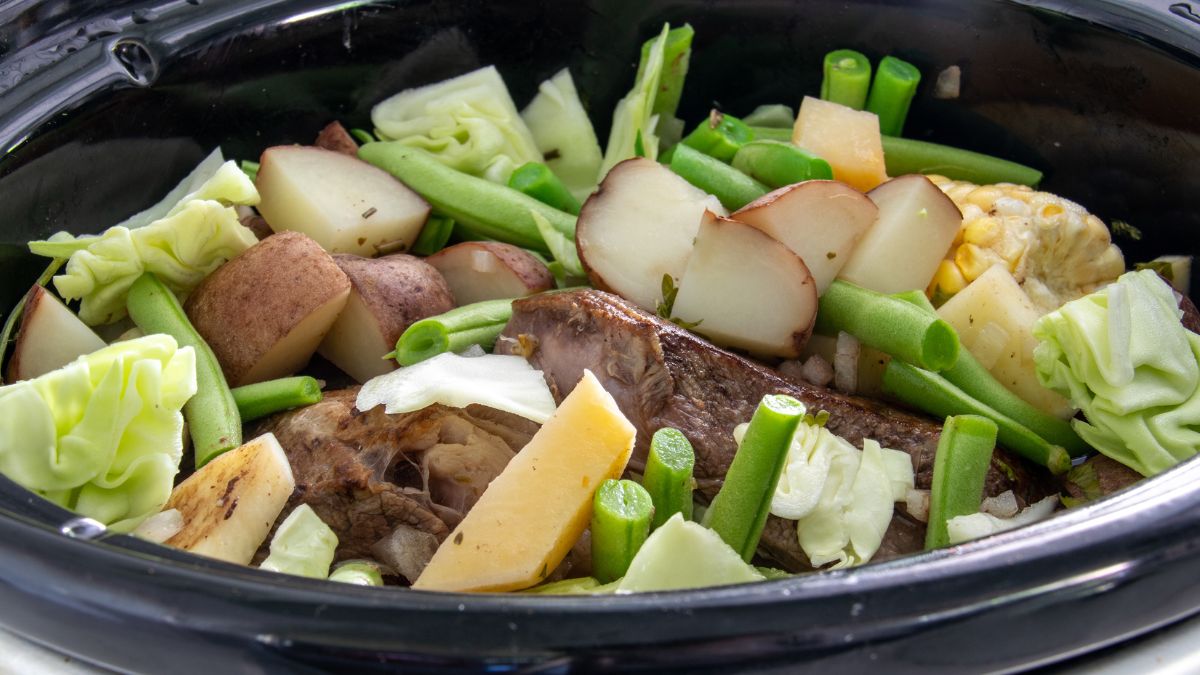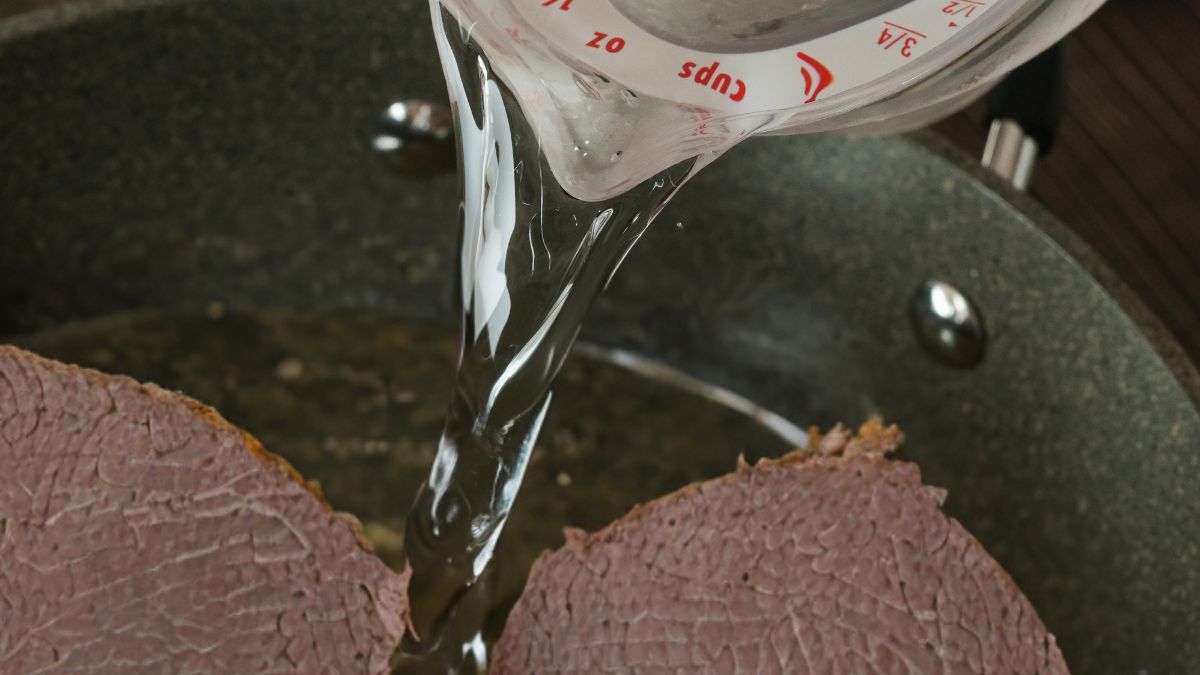How to Fix Tough Corned Beef? [3 Methods Explained]

Nothing makes St. Patrick’s dinner special like corned beef with cabbage. Nevertheless, whenever I cook this meal, I pay close attention to prevent overcooking or undercooking the meat, a mistake that can result in a tough, dry, and unsavory dish. So, how to fix tough corned beef?
To fix the corned beef, the best option is to prolong the simmering time by using a stockpot, instant pot, or oven.
These methods helped me save my lunches and dinners on multiple occasions. To help you make your corn beef into the soft and tender delight it is, I will explain in detail how to fix this meal in the text below.
How to Soften Tough Corned Beef?
The best way to soften tough corn beef is to extend the cooking time on low heat. If you are making this dish with a brisket, missing some steps in the cooking process will leave you with a tough and inedible piece of meat.
As soon as I realize my corned beef is not cooked properly, I fix it. Here is how.
In an Instant Pot
If you happen to have an instant pot, softening tough beef can be a whole lot easier. Most instant pots include a pressure cooking setting, which is perfect if you are looking for fast results.
First, place cooked corn beef in an instant pot with a few onions and garlic. Pour enough water to cover the beef completely, seal the lid on the instant pot, and set it on a high-pressure cook. Let it cook for 1 hour and 25 minutes.
Carefully remove the lid from the pot, place the meat on a plate, and cover it with aluminum foil to keep it warm.
In the Oven
Although fixing a tough corned beef in the oven might not be as practical as it would be in the instant pot, it is a method I like applying whenever I want to make the meat really tender. This method works best with smoked corned beef.
The method I use the most starts by preheating the oven to 350°F. Place corned beef into a pan with water or vegetable stock. Make sure that the liquid doesn’t cover the meat.
Cook the beef for 30 minutes and once the time is up, remove it from the oven and let it rest for 15 minutes before slicing.
In a Stockpot

To tenderize tough corned beef in a stockpot, you will have to prepare some vegetables as well. Peel a couple of onions and slice them together with some cabbage. Place cooked tough beef into a stockpot, and add vegetables and a lot of water.
Cover the pot and bring it to a boil, then lower the heat and let the meat and vegetables simmer for 2 or 3 hours. After this, corned beef should be more tender, so let it rest a bit, then cut it into thin slices and serve while it’s warm.
Is Tough Corned Beef Overcooked or Undercooked?
In most cases, corned beef gets tough when you cook it for too long at a high temperature. However, this can also happen if you cook the meat shorter than necessary.
To fix overcooked corn beef, the best option is to slice it and let it simmer in a stockpot. If your beef is undercooked, continue cooking it until the internal temperature of the meat reaches 160 F. So, keep the kitchen thermometer close and remove the meat from the oven as soon as it’s done.
How to Make Sure That You Don’t Cook Too Tough Corned Beef?
Making corned beef takes some time and practice — it took me a lot of research to finally do it right. During the preparation process, there are several steps you need to take to prevent the meat from getting too tough.
Rinse the Meat Before Cooking
Rinsing corned beef before cooking is really important because it is a way to remove excess salt, which can harden the meat. So, after you take the corned beef out of the marinade, rinse it under cold water several times.
When I first heard about this tip, I hesitated to try it because I thought I would wash off the flavor. The meat, however, absorbs all of the flavors while corning, so it is unlikely to be washed off.
Cook Over Low Temperature
As mentioned earlier, cooking this type of meat over high temperatures will make it tough and chewy. To avoid this from happening, make sure to set the cooking temperature low.
Cook the meat until the internal temperature reaches 160 F. Slow simmering at a low temperature will result in tender and delicious corned beef.
Corn and Cook The Meat Long Enough
Corning beef can take up to a week if you are doing it yourself. This process is important because meat soaks up the flavors of spices and softens over the days.
Cooking time is another important factor. It depends on the quantity of beef you are cooking. For instance, a 3-pound brisket will take from 2 and a half to 3 hours, while cooking a 5-pound piece of meat will take 3 to 3 and a half hours.
If you cook the meat shorter than necessary, it will not turn out the way it is supposed to. Even so, you can always simmer the beef for a few more minutes if you realize it’s undercooked.
Add Enough Liquid to the Cooking Pot

In most recipes, to cook corned beef, you should cover it with water. If you are boiling cabbage, carrots, onions, or any other vegetables separately, you can also use the stock left after the cooking. It will add more aroma to the meat.
The crucial step is to make sure there is enough water in the cooking pot. If you pour less than necessary, the meat might get dehydrated.
However, you shouldn’t panic if that happens. Just check the meat occasionally while cooking and pour some more if you notice water evaporating.
Slice the Beef Against the Grain
Slicing corned beef correctly really adds to the quality of the meal. To get the softest slices of beef, look for the lines of visible muscles. These lines are so-called grains of meat, and to get the most out of it, slice against it.
Slicing through the muscle shortens the fibers in them, making pieces easier to chew. Aside from that, try to cut the beef as thin as possible. The effort is worth it since it also helps make the meat softer, and, from my perspective, it’s easier to arrange on a plate while serving.
